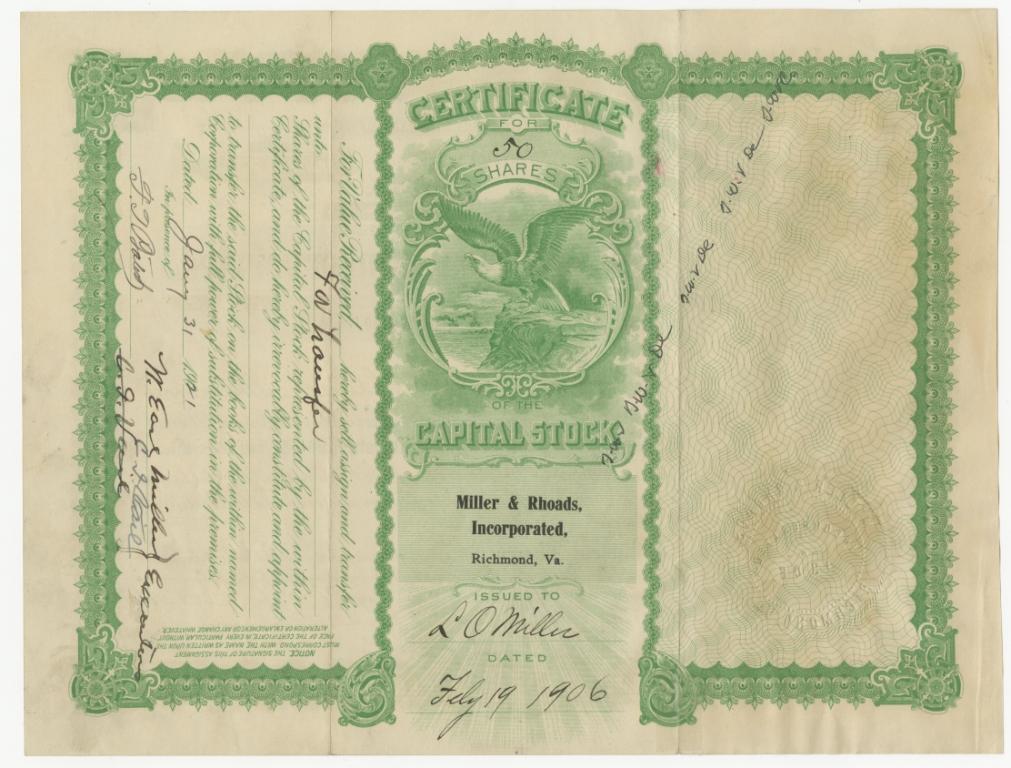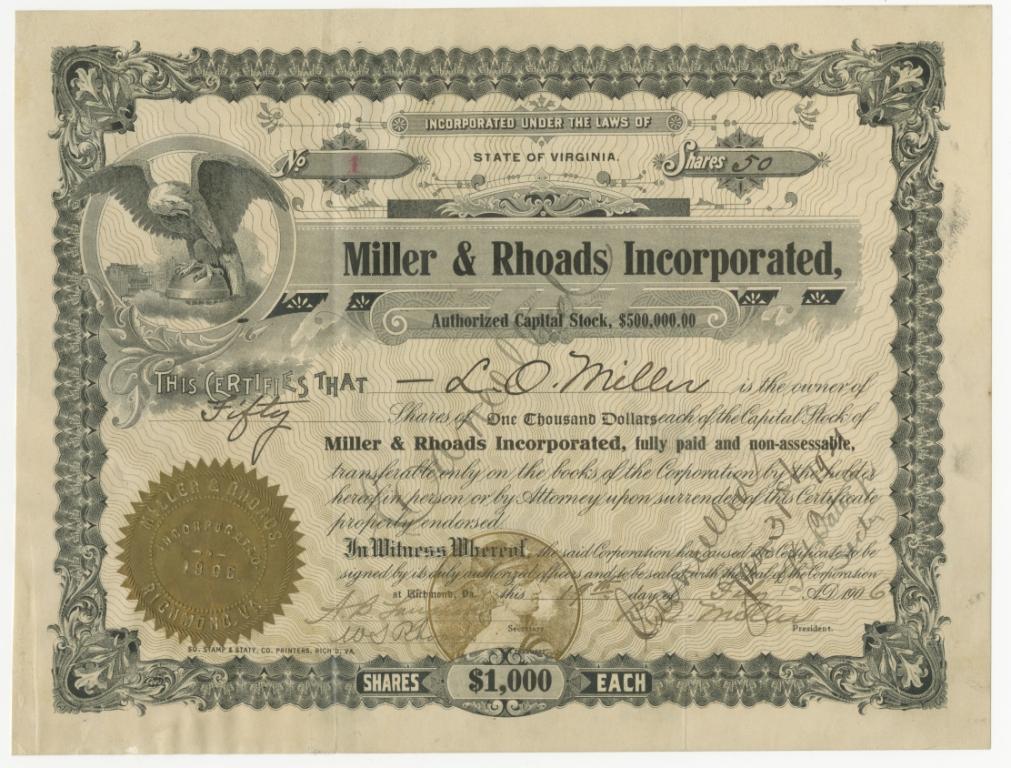Miller & Rhoads Stock Certificate Collection
C1: 120
1906
16 stock certificates
On February 19, 1906, twenty-one years after it began in Richmond as a dry goods shop, Miller & Rhoads department store was legally incorporated with the issue of sixteen stock certificates, representing a total of 350 one-thousand dollar shares, combined holdings of $350,000 against an authorized Capital Stock of $500,000. Miller & Rhoads, Inc., would go on to become an anchor of Richmond’s economy, making a name for itself as “the largest department store in the South,” combining genteel service with sophisticated taste.
C1:120 Miller & Rhoads Stock Certificate, issued to L.O. Miller, Februrary 19, 1906. (LVA 10_1319_012)
The founding certificates were issued as follows: nos. 1–7 to president Linton Miller, 8–14 to treasurer Webster Rhoads, and 15 and 16 to secretary A. B. Laughon. The ornate certificate templates were printed locally at Southern Stamp and Stationery Co., and feature large embossed seals. All are “cancelled” in various handwritings.

C1:120 Miller & Rhoads Stock Certificate, issued to L.O. Miller, Februrary 19, 1906. (LVA 10_1319_013) 
C1:120 Miller & Rhoads Stock Certificate, issued to L.O. Miller, Februrary 19, 1906. (LVA 10_1319_012)
Arrangement and access:
Numerical by certificate
Provenance:
Purchased, date unknown
Miller & Rhoads Stock Certificate Collection Read More »

